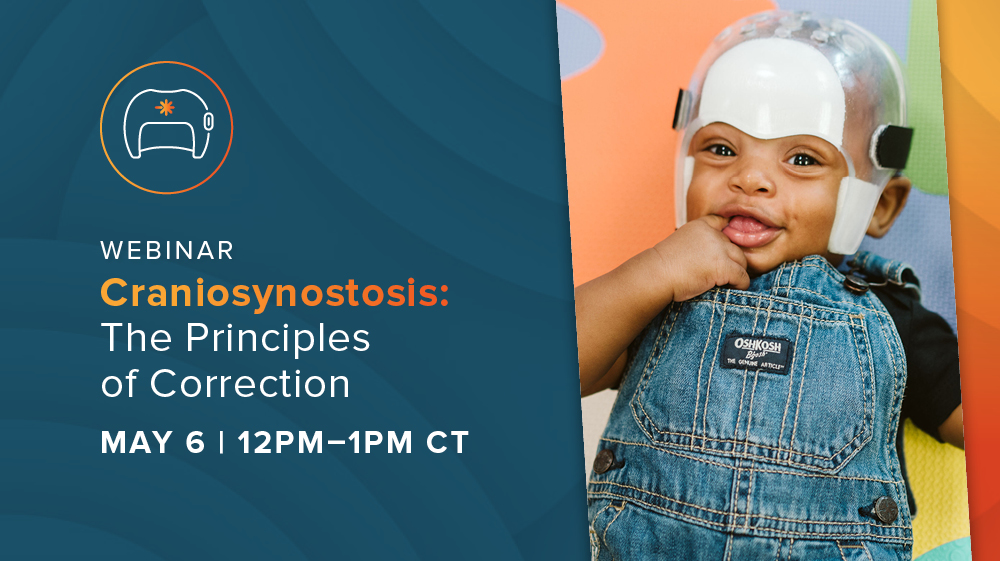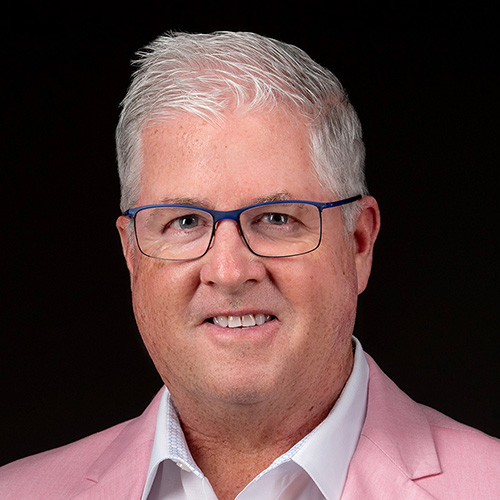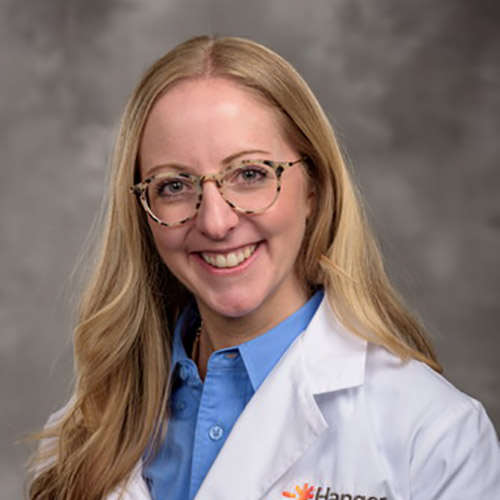Craniosynostosis: The Principles of Correction

Date and Time
Location
Virtual Event
Cost: Free
CE Contact Hours: 60 minutes
Research indicates that approximately 1 in every 2,500 babies is born with craniosynostosis in the United States1.
Craniosynostosis is the premature fusion of one or more sutures that prevents the normal perpendicular bone growth of a baby’s skull. As a result, the bones grow parallel to the suture, resulting in problems with skull growth, brain growth, and, potentially, increased intracranial pressure. Without intervention, symptoms can include blindness, seizures, and brain damage. For this type of cranial deformity, treatment is time-sensitive. When diagnosed early, families may be given the surgical option to have the fused piece of bone along the suture line removed. Depending on the type of surgical procedure, a custom cranial remolding orthosis may be prescribed postoperatively to correct asymmetry and/or disproportion.
Correction of craniosynostosis requires strong collaboration between surgeon and orthotist to allow for smooth orchestration of treatment before, during, and after surgical intervention. Through interactive case studies, the goal of this session is to provide an overview of the principles of correction, both surgical and orthotic, based on the various types of synostosis. This course also covers design considerations relating to cranial remolding orthoses and the collaborative care approach needed to improve patient outcomes.
Course Syllabus
Accreditation Status
Objectives
Upon completion of this program, participants should be able to:
- Identify the various types of craniosynostosis and resulting phenotypes
- Outline the goals of correction based on directional growth needs, cephalic index, and other factors
- List general protocol for pre- and post-operative scanning and delivery
- Describe the various postoperative cranial remolding orthoses designs and the impact the surgeon and surgery may have on design selection
Speakers

Doug Reber, L/CO
Director, Education & National Residency, Hanger Clinic
Doug is a licensed, ABC-certified orthotist with 40 years of experience. He serves as the lead for cranial remolding procedures at Hanger Clinic.

Shannon O’Shea, CPO
Area Clinic Manager, Hanger Clinic – Kansas
Shannon specializes in the treatment of infants with plagiocephaly and craniosynostosis, as well as the treatment of scoliosis. She contributes to Hanger Clinic’s Clinical and Scientific Affairs team, providing clinicians with cranial education, troubleshooting, and outcomes guidance.
1) Riordan, Coleman P et al. “Minimally Invasive Endoscopic Surgery for Infantile Craniosynostosis: A Longitudinal Cohort Study.” The Journal of pediatrics vol. 216 (2020): 142-149.e2. doi:10.1016/j.jpeds.2019.09.037
